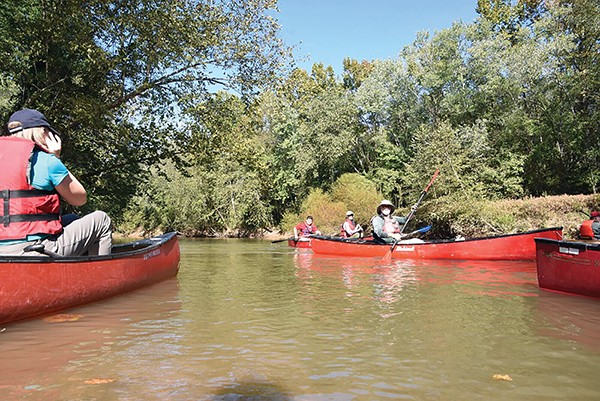Local government officials outlined last week how they will use a $60 million federal grant to combat future disasters brought forth by climate change.
Leaders met last week at John F. Kennedy Park to announce their plans, a move that comes nearly 11 months after receiving a federal resilience grant to assist with unmet recovery needs following ruinous flood damage in 2011.
“For those who don’t accept science, too bad,” said Rep. Steve Cohen. “This project will work to protect us from future floods. We need to be on the frontline of preparing our people for the disaster that’s coming. It’s going to come because we’re ruining our earth.”
In January, the U.S. Department of Housing and Urban Development (HUD) awarded Shelby County $60 million as part of its National Disaster Resilience Competition. Breaking up $1 billion and spreading it between select counties, states, cities, and Puerto Rico, it’s an initiative to strengthen the environment for future generations, said Ed Jennings, Jr., HUD’s southeast regional administrator.
 Wolf River Conservancy
Wolf River Conservancy
Paddlers hit the Wolf River.
“On behalf of the Obama administration, resiliency is a priority we’ve set,” Jennings said. “It’s not just about how we have enough money to rebuild housing or infrastructure, but that we protect ourselves for a new generation.”
Shelby County’s plan, Greenprint for Resilience, will restore wetlands and flood storage areas along the Wolf River to protect homes and residents. A portion of the grant will be allocated for repairs and upgrades to Rodney Baber Park and Kennedy Park, which, currently, is the only city park with a boat launch ramp into the Wolf River. A new Wolf River boat ramp was opened last week in Piperton.
About $9 million will go toward completing the 18-mile Wolf River Greenway Connection, said Keith Cole, executive director of Wolf River Conservancy.
“For many people, getting outside, enjoying the river, hiking and biking, that’s what the Wolf River Watershed is all about,” Cole said.
HUD’s grant will further assist the Wolf River Conservancy with mitigating future flooding and preventing soil erosion that could have negative affects on the Memphis Sand Aquifer. Native wildlife, too, will be better protected.
“The mission of the Wolf River Conservancy is just as relevant today if not more so since our founding in 1985,” Cole said.
Shelby County Mayor Mark Luttrell and Memphis Mayor Jim Strickland said the Greenprint plan was accomplished by officials at all levels of government working together. Pointing to a nearby softball field where he played as a teenager, Strickland said “the same thing that was true then is true now, you win with teams.”
Noting other recent “game changers” in the Mid-South, Cohen mentioned the new bike and pedestrian friendly Harahan Bridge, a $15 million dollar Tiger grant to increase downtown walkability, and a $30 million federal grant to revive Foote Homes. Though the Greenprint project isn’t “sexy like the Harahan bridge,” Cohen said it was just as imperative.
“This here, $60 million, this is a very big deal,” Cohen said. “Memphis is the city of good abode. This project is going to help people in need, and that’s what we need to do with our time on earth. This is what cities need to be known for.”